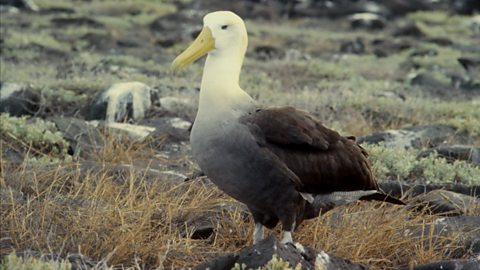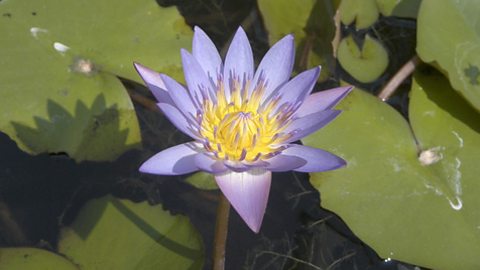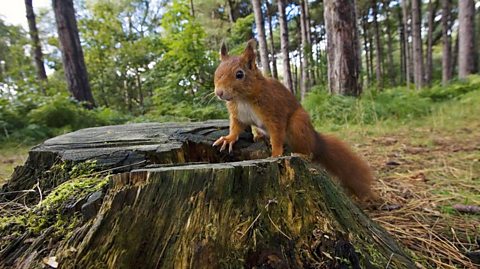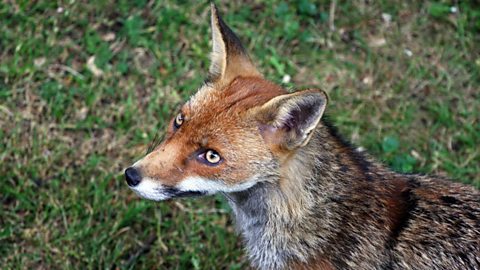Key points
- Pyramids of number show the number of organisms at each stage in a food chain.
- Pyramids of biomass show the mass of organisms at each stage in a food chain.
Video
In biology the relationship of what eats what and how energy passes through an ecosystem is called a food chain.
Pyramids can help give us an overall picture of a particular food chain. They can represent either numbers of a particular organism or their biomass, which is living tissue.
A pyramid of numbers approximately shows the numerical proportion of different organisms at each level of the chain.By contrast, a pyramid of biomass shows the collective mass of organisms at each stage.
For example, in a forest a pyramid of numbers might show a single tree feeding loads of caterpillars, which can feed several blue tits, which can feed a couple of hawks. But this doesn't look like a pyramid at all.
If we use biomass, however, we get a regularly stepped pyramid because one tree has loads of biomass and it's a more useful visualisation because it shows how biomass reduces as we move up the pyramid.
Can you answer these questions based on the video?
1. What is biomass?
2. What shows the numerical proportion of different organisms at each level of the chain?
Living tissue.
A pyramid of number.
Food chains
A food chain shows the different species of organisms in a habitatThe place where an organism lives. and what eats what. For example:
Grass ā Grasshopper ā Frog
The arrows in the food chain show the flow of energy from one organism to another. The first organism in a food chain is called a producerThe first organism in a food chain. Usually a green plant or alga which stores energy from sunlight as glucose during photosynthesis..
The organisms at the next stage are called primary consumers. They eat producers and so are always herbivoreAn organism that eats plants. All organisms after the producer are called consumerAn organism, usually an animal or fungus, which obtains its energy as food from other organisms.
The next stages after the primary consumers are called secondary consumers and tertiary consumers. These can be carnivoreAn organism that eats meat. or omnivoreAn organism that eats both plants and meat. The final stage can also be called the apex predator.
Pyramids of number
Food chains show the flow of energy through a habitat. But they do not show how many organisms there are at each trophic levelsThe stages in a food chain.. The size of the populationAll the members of a single species that live in a habitat. at each trophic level is shown in a pyramid of number.
- The bars are drawn to scale - the more organisms it represents, the wider the bar.
- It is important that pyramids are drawn with steps, not smooth sides.
- The producer in the food chain always goes at the bottom of the pyramid of numbers and the apex predator at the top.
Think about this food chain:
Clover ā Snail ā Thrush ā Sparrowhawk
Clover is a plant and it is the producer in this food chain, so its bar goes at the bottom of the pyramid:
Energy is lost to the surroundings from one level to the next, so there are usually fewer organisms at each level in this food chain.
A lot of clover is needed to support the snail population. A thrush eats lots of snails, and a hawk eats lots of thrushes, so the population of hawks is very small.
Other pyramid of number shapes
Sometimes the pyramid of numbers does not look like a pyramid at all. This could happen if the producer is a large plant such as a tree, or if one of the animals is very small. Here are two examples of this:
Pyramids of biomass
Remember, food chains do not show the number of organisms at each trophic level. Pyramids of number are not always perfect pyramids because of large organisms at the bottom and small ones at the top.
biomassLiving or recently dead tissue. Cut down trees and animal dung which are often used as fuel are biomass, as well as living organisms. is living or recently dead tissue. People are biomass, as are all other animals and plants. A pyramid of biomass shows the mass - in grams or kilograms - of the population of the trophic levels in a food chain.
Converting the two previous pyramids of number into biomass means they look like this:
Pyramids of biomass are always pyramid-shaped.
Test your knowledge
Quiz
Test questions
What do pyramids of number and biomass show?
- Pyramids of number show the number of each organism at each stage in a food chain.
- Pyramids of biomass show the amount of living tissue at each stage in a food chain.
Describe and explain why pyramids of number are not always perfect pyramids.
- The bar for the producer at the bottom of the pyramid of number can be small if the producer is large, for example, a tree.
- The bar for the final trophic level at the top of the pyramid of number can be large if this species is small, for example, fleas.
Remember, a different but correct example of an organism is also a correct answer.
Play the Atomic Labs game! gamePlay the Atomic Labs game!
Try out practical experiments in this KS3 science game.

More on Ecosystems and habitats
Find out more by working through a topic
- count5 of 7

- count6 of 7

- count7 of 7

- count1 of 7
